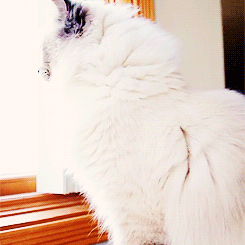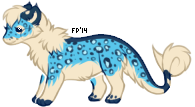WELCOME
- Deer of Ele have moved to DEVIANTART -
though I would like to keep this topic tentatively open too,
for some free adoptables now and then for you chickensmoothians <333
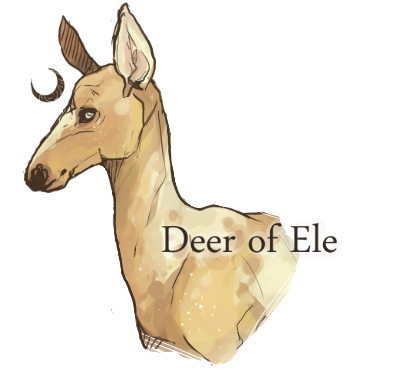
BASIC INFO
physical :
In conformation, Ele Deer are lean, yet stocky and express some very elegant shapes. Their body structure is similar to that of the white tailed deer, but it's their size that sets them apart. D.O.Es are born strangely small in comparison to their size as adults. When fully grown, a male Ele deer can reach up to 1.65 cm high at the shoulder. Even at this size Ele deer are remarkably agile and elegant on their feet and far from awkward. This has made 'showing' somewhat popular (but illegal) among the species, especially when the deer presents rare and unusual genes, which are described below. D.O.Es also cannot be used for riding, as their light backs and shoulders would be far too fragile.
sizes:
coats and genes :
Simply put, Ele deer may show any coat, pattern, color or mutation that is present in any breed of equine or deer.
This includes, for example; appaloosa, paint, brindle, flea-bitten, dapple, roan and varnish genes,
as well as rarer mutations or patterns such as; bird-catcher spots, peacock spots, bloody shoulder, or chimera.
Also, just like horses, Deer of Ele may have a blaze, sock, star, snip, etc.
Deer of Ele are also famous for the ability to have many different mutations and patterns present at once, so it's not too rare to see a ''dapple brindle roan spotted blanket with a bloody shoulder.''
However what makes this breed especially intriguing are the newly discovered patterns and mutations that D.O.Es have of their own. The research is still ongoing, but the following genes, though rare, have now been fully recognized:
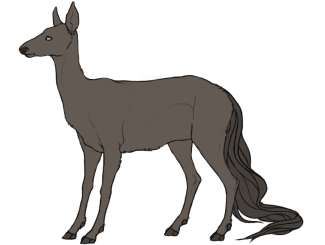
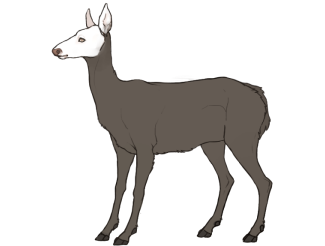
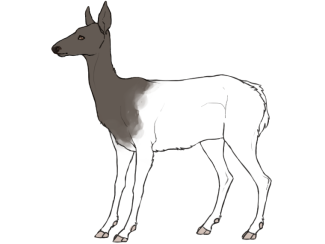
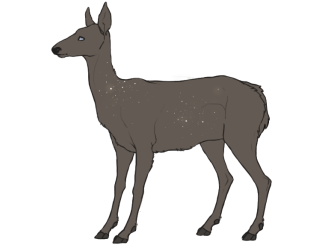
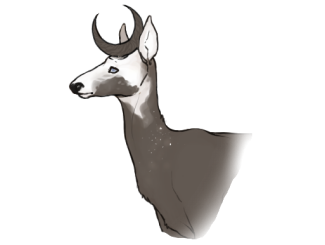
- Deer of Ele have moved to DEVIANTART -
though I would like to keep this topic tentatively open too,
for some free adoptables now and then for you chickensmoothians <333

Deer of Ele (D.O.E) or simply Ele Deer, is a newly discovered breed of deer that holds some truly curious and unusual characteristics. Their coats and patterns resemble those of equines, while their lifestyles are akin to common deer. However it's the origin of D.O.Es that has caused the most concern, as it seems the species was never discovered in just one place, but the creatures began to 'appear' everywhere throughout the world. This 'arrival', along with rare sightings of a crescent moon shaped horn that crowns these specimens, have created a whirlwind of questions, stories and even soon to be legends. Sometimes Ele deer are called ''aliens'', ''travellers'' or ''visitors'' as a result.
Today, Ele Deer are mainly used for breeding and are carefully observed in order to discover all the genes and patterns they may hold. Unlike wild deer, but similarly to equines however, D.O.Es seem to form extremely strong bonds with humans Will you?
BASIC INFO
physical :
In conformation, Ele Deer are lean, yet stocky and express some very elegant shapes. Their body structure is similar to that of the white tailed deer, but it's their size that sets them apart. D.O.Es are born strangely small in comparison to their size as adults. When fully grown, a male Ele deer can reach up to 1.65 cm high at the shoulder. Even at this size Ele deer are remarkably agile and elegant on their feet and far from awkward. This has made 'showing' somewhat popular (but illegal) among the species, especially when the deer presents rare and unusual genes, which are described below. D.O.Es also cannot be used for riding, as their light backs and shoulders would be far too fragile.
sizes:
Newborn; newborn fawn - small newborn foal
Adolescent; red deer - fallow deer
Adult; european elk - average horse
coats and genes :
Simply put, Ele deer may show any coat, pattern, color or mutation that is present in any breed of equine or deer.
This includes, for example; appaloosa, paint, brindle, flea-bitten, dapple, roan and varnish genes,
as well as rarer mutations or patterns such as; bird-catcher spots, peacock spots, bloody shoulder, or chimera.
Also, just like horses, Deer of Ele may have a blaze, sock, star, snip, etc.
Deer of Ele are also famous for the ability to have many different mutations and patterns present at once, so it's not too rare to see a ''dapple brindle roan spotted blanket with a bloody shoulder.''
However what makes this breed especially intriguing are the newly discovered patterns and mutations that D.O.Es have of their own. The research is still ongoing, but the following genes, though rare, have now been fully recognized:

HALO TAIL ;
(halo tail / halo tailed)
uncommon
A halo tail is a long, surprisingly silky, tail that resembles that
of an equine. The tail gets its name from the circular shapes it
creates when the deer runs or it's windy. The smooth and
extremely light hair is easily lifted from the ground by the
smallest breeze, twisting, turning and making 'halo-looking'
loops.

CROWNING ;
(crowning / crowned)
uncommon
Crowning is a mutation where the head (and occasionally
the neck) has no pigment of color. It might sometimes be
called 'albino' or 'partial albino' as a result. The rest of the
body is fully colored and may present many other genes and
mutations along with crowning. A 'crowned' Ele deer will
appear to have dull grey/blue, or rose colored eyes, and a
light peach/cream nose.

HOODING ;
(hooding / hooded)
rare
Hooding is a mutation where the body (except the head
/ neck) has no pigment of color. It might sometimes
be called 'albino' or 'partial albino' as a result. The head,
and usually neck, is fully colored and may present many
other genes and mutations along with hooding. A
'hooded' Ele deer will appear to have dull grey/cream/or
pink colored hooves, though they are occasionally white
also.

OMEN SPOTS ;
(omen spots / omen spotted)
rare
Omen spots are small clusters of white spots that
appear to 'glow'. They give the impression of stars,
and can be found anywhere on the body. However it's
most common to see one or two clusters, on the
shoulder, rump, or neck. They are not visible on the
area where an Ele deer is 'crowned' or 'hooded', but
may still be carriers of the gene.

LUSTER HORN ;
(luster horn / lustered)
very rare
A 'lustered' Ele deer has what is known as a
'luster horn'. It is a strong, yet light, single
crescent moon shaped horn that sits in the
middle of the forehead between the ears. There
is no known reason for this horn, because given
its rare occurrences and the fact it can appear on
both males and females, it's certain it is not used in
fighting for mates or territory. Ele deer that are
'lustered' are very treasured due to its rarity.











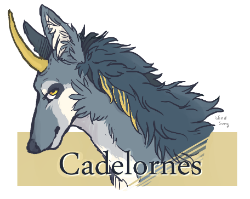


 ✧
✧  ✧
✧ 



